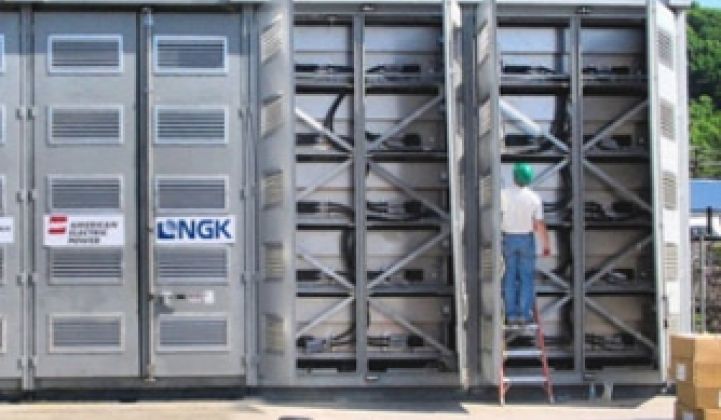The Storage Technology of Renewable and Green Energy Act of 2009 from U.S. Senator Ron Wyden would issue tax credits for energy storage facilities or equipment that store energy for later delivery. "It’s time for Congress to develop an energy policy that – instead of picking winners and losers – rewards performance and promotes innovation,” he said in a statement.
The new act will provide a 20 percent tax credit for investments in storage systems "that require similar innovations and incentives as other energy technologies." Further, the bill would give 30 percent investment tax credit for on-site use in individual homes, businesses and factories. This opens up possibilities for owners of plug-in hybrid vehicles to cooperate with electric companies. The vehicles can be used to store energy for the grid.
Today, tax credits are available for the generation of renewable energy or for retrofits and/or new construction for conserving energy. If passed, the proposed legislation would also provide credits for storage technologies such as water reservoirs, flywheels, hydrogen production or batteries connected to the grid, as mentioned above.
What makes storage different than a lot of other green markets, however, is its theoretical nature. Very few storage technologies have gone commercial. Several companies produce lithium-ion batteries, but utilities have only begun to experiment with them for balancing loads or storing power at utilities. General Electric recently jumped into the market for sodium batteries – computer-sized batteries that can store large amounts of power at wind farms. Right now, sodium batteries are produced by a large Japanese conglomerate and a few small startups. Compressed air storage is an idea making a comeback, but it is still in the prototyping and testing stages. Flow batteries are another great technology that is still in testing.
Still, the market for storage is growing, particularly with the growth of solar and wind. Industrial fuel cells are available commercially – UTC power makes industrial-sized hydrogen fuel cells and sells them to customers like Fujitsu – and more manufacturers are expected to jump into the market. Other beneficiaries could include the thermal mass storage companies like Calmac and Ice Energy: These systems make ice at night when power is cheaper to cool facilities during the day.
The amount of ice can be staggering. A Nordstrom's in Hawaii has a Calmac system that produces 43 tons of ice a night (see Calmac: The Ice Age Returns to Offices).
"Storage in general is going to be critical when we move to sustainability. For example, coal is stored energy, so we can't forget the storage aspect of renewables," said Mark MacCracken, Calmac's CEO, who was at a business meeting in Istanbul. "This legislation is going to make renewable energy more viable. It’s a good technology today, but it's not dispatchable. The storage bill is going to get things moving."
Thermal storage got somewhat of a black eye during late 1980s and early 1990s, said MacCracken. And now Calmac is trying to explain why things went bad before, and why they won't in the future.
"There were a lot of rebates to encourage customers to reduce peak demands, that put a lot of unproven technologies out of the woodwork. In 1996, the bad technologies went away, but left installations that weren't working well. Now we try to get the message out to the engineers to remember the old days," said MacCracken.
The new energy bill bases its tax credits on how much energy being stored, not which technology that is used. Senator Wyden hopes that the tax incentives will create a demand for renewable energy storage technologies.
Join industry leaders and influencers at Greentech Media's Green Building Summit in Menlo Park, Calif., June 11.




